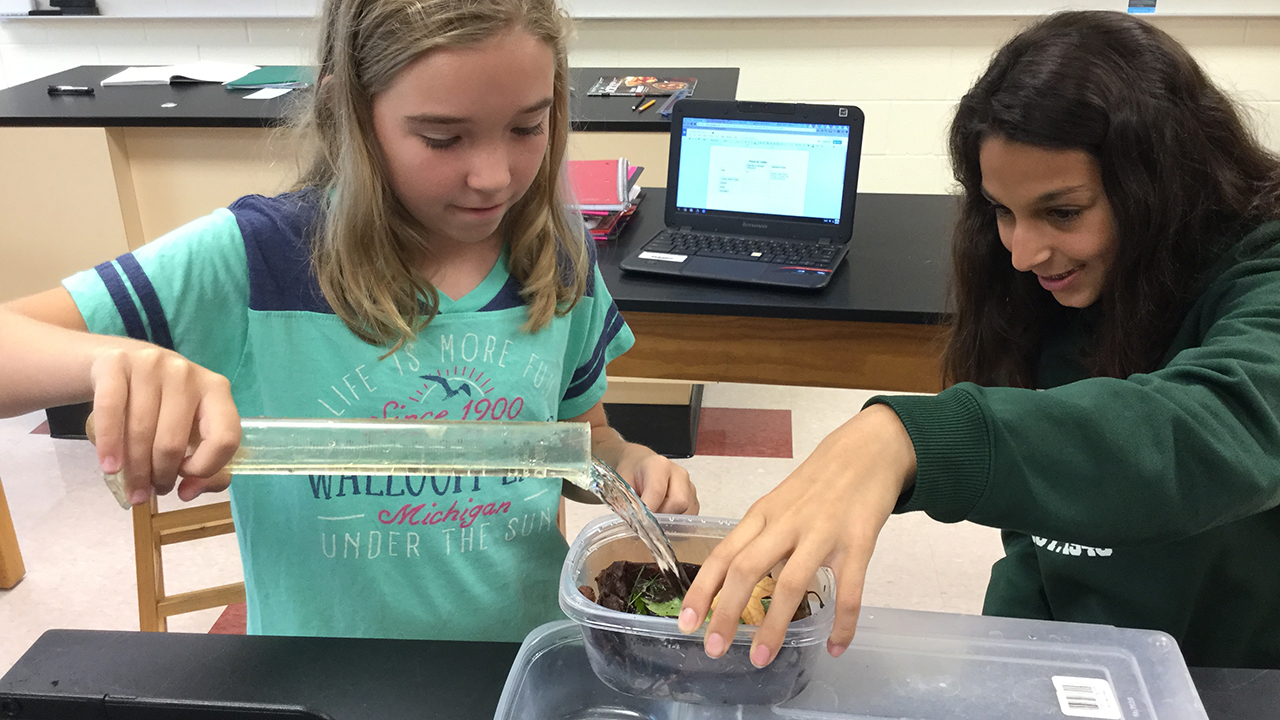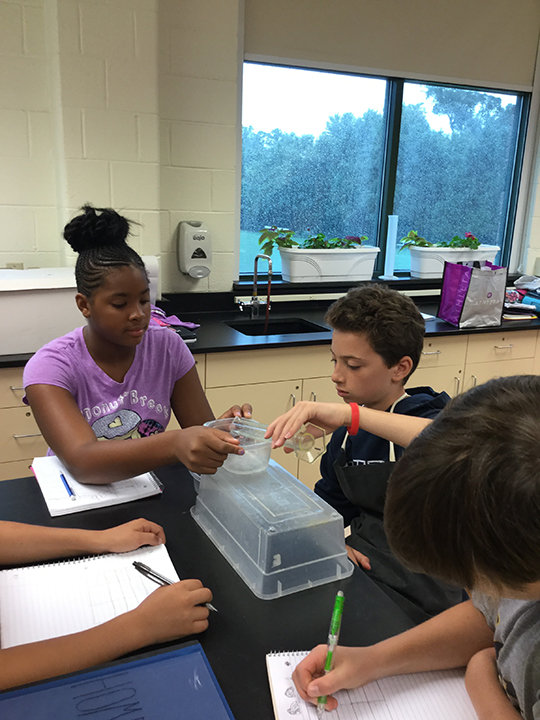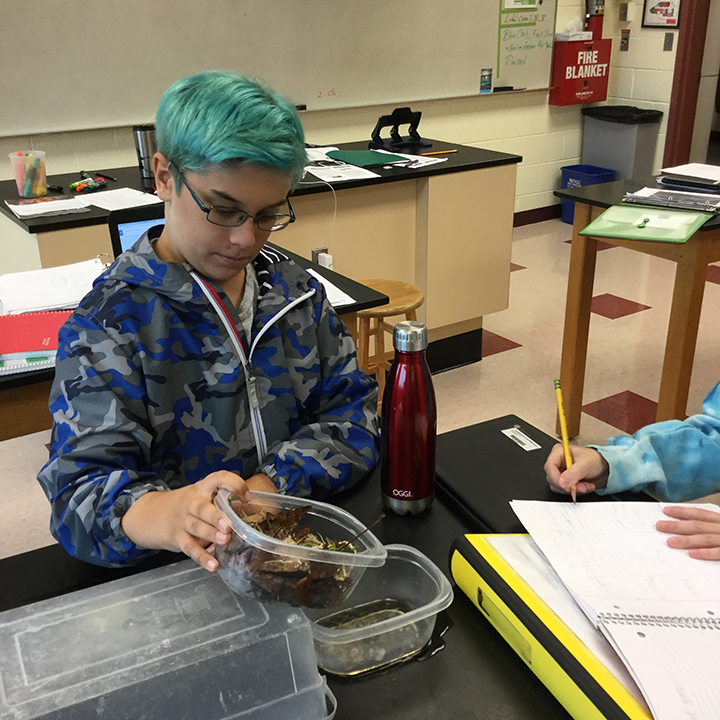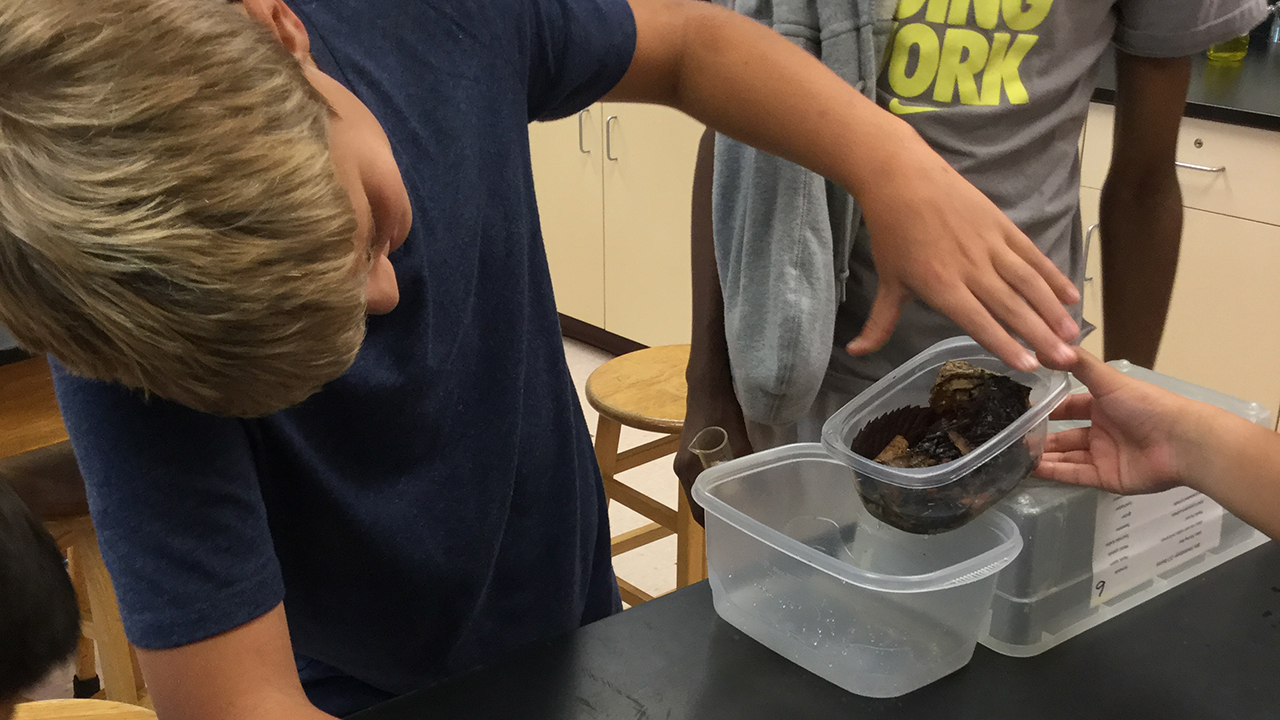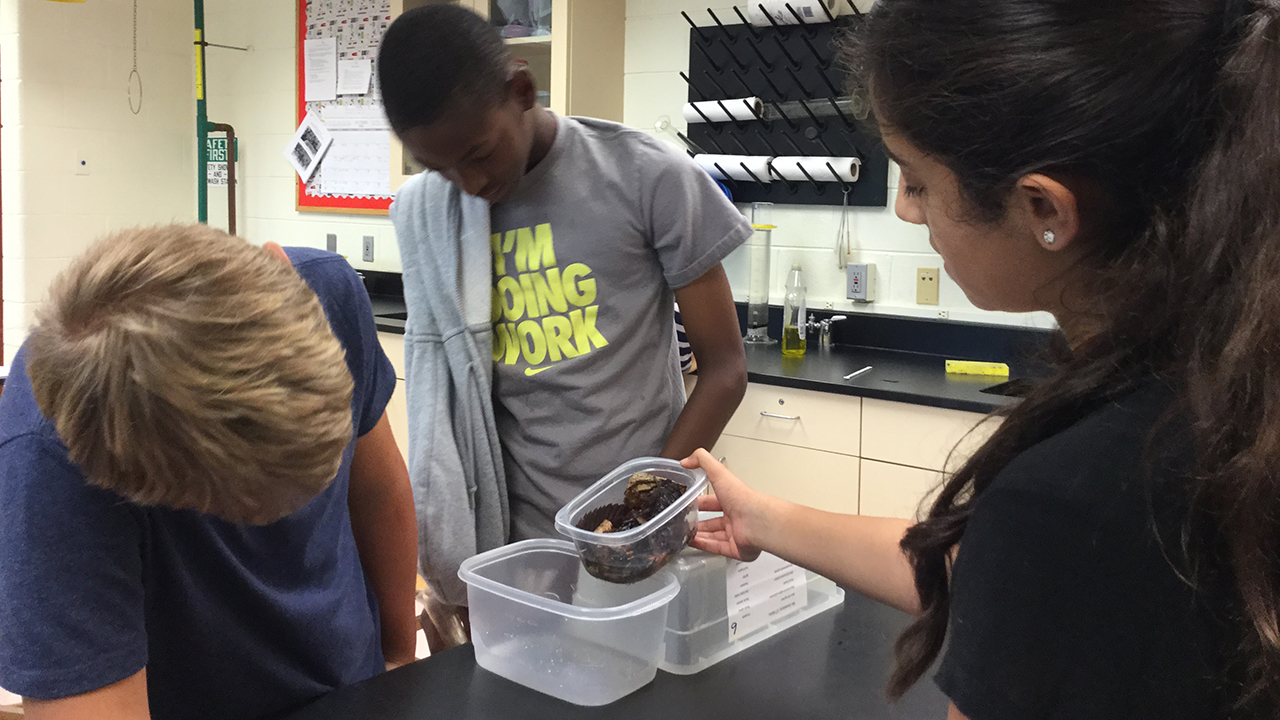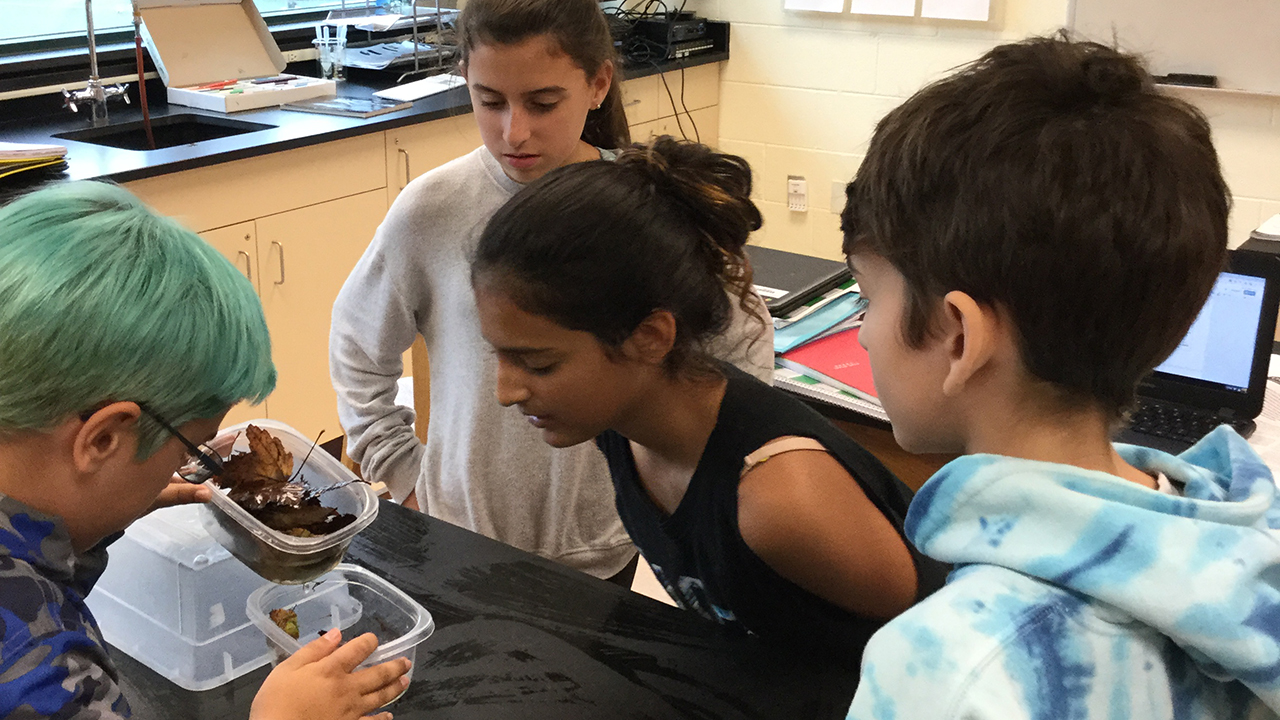It was going to be a dreary day… the Capital Weather Gang gave it a 3… out of 10. It was going to rain. all. day.
On my way into school it was dark, it was lightning, and the streams along the way were already flowing more swiftly. I made a mental note to myself to tell my students to look at their local streams later in the day. All of these streams eventually empty into the Chesapeake Bay, which we are now studying.
And then it occurred to me—rain, streams, erosion, some water seeping into the earth, but much more of it running off, streams swollen with runoff turned brown due to erosion… I already had a good plan for the day, but today was the perfect day to do a lab about what happens to the water when it rains.
Could we test how the different surfaces of the earth affect how much of the rainwater seeps in or runs off to the streams and rivers? We had already talked about storm drains and how they carry away water that does not seep into the earth, but we did not have any data, so I decided to change my lesson to connect with what we were seeing in real-time.
Plastic containers with holes along one bottom edge could represent the earth. Soil, sand, or gravel would simulate different surfaces of the earth. An empty container would represent land covered with buildings or pavement. Students measured the amount of “rain” that fell on their container and then measured how much water flowed out of the bottom of the container. They repeated the process until they tested all of the possible surfaces. Their data clearly showed which surfaces reduced runoff.
A rainy day lab with measurement and variables—a perfect connection to what is going on outside our windows, and how what we do connects to the health of the Chesapeake Bay.


